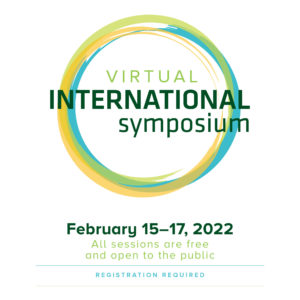
Colorado State University’s International Symposium begins Feb. 15 and continues through Feb. 17 with a diverse collection of ways in which the campus and the world come together to advance knowledge and culture.
At 1 p.m. on Wednesday, Feb. 16, symposium attendees will be joined for a keynote discussion titled “How We Collectively Lost Our Minds: A Journalist Trying to Cover Today’s World” with Lourdes “Lulu” Garcia-Navarro, podcast host for The New York Times Opinion and longtime voice of National Public Radio’s Weekend Edition Sunday.
Garcia-Navarro’s keynote, as with all of the sessions at the International Symposium, is free for the public to attend on Zoom, though advance registration is required.
Few people have followed the evolution of knowledge and culture, both in America and abroad, from as many angles as Garcia-Navarro. She worked for years as a foreign correspondent for The Associated Press before joining NPR in 2004.
Garcia-Navarro lived and reported in Iraq, Mexico, Israel and Brazil before returning to the U.S. in 2017 to become the first Latina to lead one of the radio network’s flagship programs, Weekend Edition. She won two Peabody Awards during her correspondent years, first in 2004 as part of the team at NPR covering the U.S. invasion of Iraq and again in 2011 for bringing listeners into the Arab Spring uprisings in Egypt and Libya. She said that when she moved back to the U.S. soon after the 2016 presidential election, her recognition of the fracturing political and media climate was informed by past experience.
“Everything that was happening in the U.S. was reminiscent of things happening elsewhere,” she said. “It was surprising to me how much the U.S. press corps was unaware of what was happening.”
The shift of political affiliation from a framework for policy debates to a matter of personal identity had been happening for many years, Garcia-Navarro said; the 2016 presidential election was the culmination of a long process rather than an isolated event.
“The reason it shocked so many in 2016 was because people looked at the people next to them and said, ‘Hey, do I know you?’” she said.
Societal changes in America and around the world also put into sharper relief the degree to which public trust in the news reporting process has eroded over time, a “compound fracture” Garcia-Navarro said can be traced to three major causes.
First, she said journalism too often defaulted to “an ivory tower” where communities of color were either overlooked entirely or not treated with due respect when reported on, a sort of “dropping in and visiting” mentality by reporters. The second influence she pointed to was the struggle of news media to adapt their business models to the digital age, starting a domino effect that starved local outlets and shrank many national publications, meaning fewer people knew a journalist personally. Finally, Garcia-Navarro said political actors seized opportunities to undermine the very idea of facts and truth themselves, enabling many consumers to live in news “bubbles” where they’re mostly exposed to ideas they’re likely to agree with.
“People don’t want to hear something that doesn’t fit how they think of the world right now,” she said. “They think you’re trying to pull one over on them.”
A helpful step reporters can take in regaining public trust is one Garcia-Navarro said that she has practiced for years: being extremely transparent with interviewees by talking to them about the mechanics of question-and-answer interviewing and what their rights are as participants.
“As journalists, we’re all ambassadors of the profession,” Garcia-Navarro said. “I think we should’ve been doing it all along.”
Garcia-Navarro said her profession causes her to be something of a pessimist by nature, but while there are reasons to worry about the state of both the news media and society at large, she said there are bright spots, too.
“There are more young people now than ever that are interested in journalism,” Garcia-Navarro said. “There are more women than ever in journalism schools. There are more ideas and interesting ways of doing things.
“By any measure journalism is in crisis,” she said, “but what is today doesn’t have to be tomorrow.”
The CSU International Symposium’s keynote discussion, “How We Collectively Lost Our Minds: A Journalist Trying to Cover Today’s World” with Lulu Garcia-Navarro of The New York Times Opinion, will be held Wednesday, Feb. 16 from 1 to 2 p.m. for free via Zoom.
Register online here: https://col.st/LFxaH
Learn more about all three days of the International Symposium and register for events here: https://col.st/cCsLs
